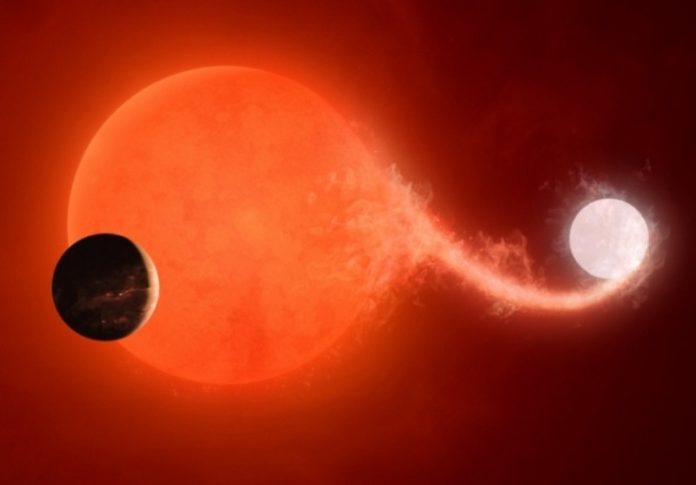
Our sun, like every other star, has a lifespan.
It will spend billions of years glowing brightly before finally running out of fuel and transforming into a red giant. This phase marks the star’s final days.
In this process, the star expands to such an extent that it consumes any planet close enough. We used to think that no planet could survive this transformation.
But, in an exciting development, a group of international scientists have found a planet that appears to have done just that!
The planet in question is called Halla, or 8 Ursae Minoris b. It’s orbiting a dying red giant star over 500 light-years away from Earth. Shockingly, Halla has managed to avoid being gobbled up by its expanding host star.
Dr. Ben Montet, a scientist involved in the study, has expressed surprise at this because, by all accounts, the planet should have been absorbed by its star.
Halla was first discovered in 2015, and it has remained in a stable orbit around its star for more than a decade.
The star, named Baekdu, is in a stage of life where it’s burning helium in its core, a phase that typically comes after a star has expanded and swallowed nearby planets. Yet, Halla, circling closely to Baekdu, has survived, making it an extraordinary anomaly in space.
The discovery of Halla has led to some fascinating questions. How did this planet survive when it should have been destroyed by its expanding host star?
And could there be other survivor planets out there?
The researchers have some theories about why Halla might have survived. One idea is that Baekdu used to be two separate stars.
These two stars might have merged into one, and this event could have changed the star’s expansion process, saving Halla. Alternatively, Halla might be a “second-generation” planet, formed from the gas cloud created when the two stars collided.
Interestingly, scientists also noted that Baekdu has a high amount of lithium in its atmosphere. This is unusual for an older red giant. Could this be linked to Halla’s survival? The team thinks it could be a clue, but they’re not entirely sure.
Whatever the reason for Halla’s survival, it’s a fascinating discovery. It shows us that not all planets close to their stars are doomed when those stars reach their red giant phase.
Plus, it opens the door to the exciting possibility that there might be other “survivor” planets out there.
Remember, Halla was a surprising find in the first place. Scientists will continue to look for more surprises as they explore the depths of our universe. Who knows what other amazing discoveries await us?
Follow us on Twitter for more articles about this topic.



